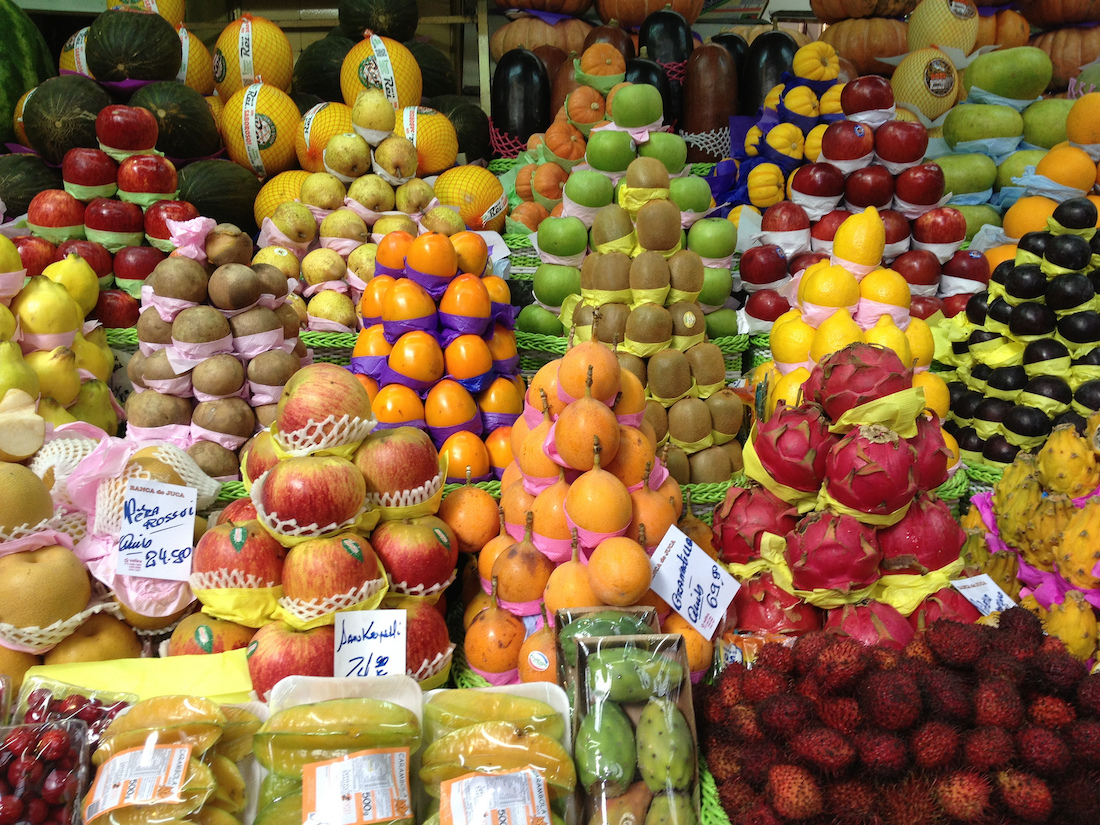 Plant Biology
Plant Biology
Explore the best sugar factory: the fruit
The taste of a fruit is largely determined by its sugar composition. Understanding the mechanisms responsible for the accumulation of different sugars will enable us to select fruits to increase their consumption. A model of sugar metabolism allowed the identification of a candidate mechanism to explain the difference in sugar composition observed in commercial and wild peach fruits.

Everyone knows that eating fruit is important for good health, being full of vitamins and essential elements. The delicious taste of a fruit is mainly determined by its sugar and acid composition. Indeed, fruit contains several sugars with different properties. For example, in peach, there are four different sugars: sucrose, which is the most abundant at maturity, then glucose and fructose and finally sorbitol. These sugars have different sweetness, like fructose which has a sweetening power twice that of sucrose. However, some people have fructose intolerance and this may represent a limitation in fruit consumption.
Understanding the mechanisms responsible for the synthesis and accumulation of different sugars will make it possible to select fruit varieties which meet very specific criteria to increase their consumption.
Sucrose and sorbitol are produced in the leaves through photosynthesis and are transported to the fruit via sap. Inside the fruit, cell enzymes -miniature protein machines that speed up biochemical reactions responsible for sugar synthesis and degradation- break down a part of the sucrose and sorbitol into fructose and glucose. These sugars are then either stored in the fruit cell vacuole, a compartment of the cells which gives the good sweet taste of the fruit, or degraded by other enzymes in the cytoplasm to provide energy or synthesize structural compounds for the cell.
In today's peaches, fructose and glucose concentrations are equivalent. However, some wild peach trees, or peach trees used as an ornament, bear fruit with a very low concentration of fructose compared to glucose. This natural feature makes it possible to investigate the mechanisms linked to the accumulation of fructose in the peach.
At first, we postulated that a difference in enzyme activities could be at the origin of the low fructose content observed in wild peach trees. We characterized the activity of all the enzymes involved in sugar metabolism in more than 100 peach varieties, with both standard and low-fructose amount.
Surprisingly, no evident difference was found among the peach varieties in terms of enzymes determining the fructose content.
To better investigate the biological mechanisms behind sugar accumulation in the peach, we decided to develop a mathematical model of sugar metabolism during fruit growth.
A model is a simplified representation of a (biological) system that includes the essential features without the burden of unnecessary details. A model, indeed, cannot prove if a given mechanism is at work or not in a given situation but it can demonstrate whether the proposed mechanism is sufficient to produce an observed phenomenon.
Our model represents the action of the different enzymes which synthesize or degrade sugar molecules as well as the action of transporter proteins that carry them through the cell vacuole's membrane. Such an internal transport may have important consequences on the final fruit taste because it allows the storage of sugars in the vacuole and thus prevents them from being degraded by the enzymes of the cytosol.
The model made it possible to simulate the sugar composition in peaches and it allowed us to understand why certain peaches have less fructose than glucose.
The model revealed that the best way to simulate a situation in which we have less fructose compared to glucose in a peach fruit is to increase the specificity for fructose of a particular enzyme, called fructokinase, that degrades fructose in the fruit cell's cytosol. This characteristic of the fructokinase to specifically degrade fructose is usually known as "affinity of an enzyme" and, unfortunately, it is difficult to measure experimentally. By modifying the fructokinase affinity for fructose, fruit having a standard fructose content could be virtually transformed into low-fructose fruit, and conversely.
From a fundamental science perspective, the model allowed the identification of a candidate mechanism to explain the difference in concentration between fructose and glucose observed in wild peaches. Although further laboratory studies are needed to validate the model's findings, the development of a mathematical model of fruit sugar metabolism can substantially improve our understanding of the control of fruit sweetness.
Based on the model described, it will be possible to cross existing peach trees with specific characteristics of the enzymes synthesizing or degrading sugar molecules or sugar transporters in order to obtain new fruit varieties with a sugar composition that better satisfies the consumer's expectations.
Original Article:
E. Desnoues, M. Genard, B. Quilot-Turion, V. Baldazzi, A kinetic model of sugar metabolism in peach fruit reveals a functional hypothesis of a markedly low fructose-to-glucose ratio phenotype. Plant J 94, 685-698 (2018)Next read: How nanosized shrapnel from exploding fungal cells may impact us: from allergies to cloud formation by Michael J. Lawler
Edited by:
Dr. Giacomo Rossetti , Senior Scientific Editor
We thought you might like
More from Plant Biology
Unravelling the Secrets of Pine Roots: A Tale of Nutrition and Adaptation
Oct 20, 2023 in Plant Biology | 3.5 min read by Rafael Cañas , Francisco OrtigosaStressful memories help plants resist caterpillars
Oct 2, 2023 in Plant Biology | 3.5 min read by Samuel Wilkinson , Adam Hannan Parker , Jurriaan TonDecoding the genome of a jackfruit that grows all year round
Sep 6, 2023 in Plant Biology | 3.5 min read by Tofazzal IslamLife after logging: the tale of recovering tropical forests
Aug 21, 2023 in Plant Biology | 3.5 min read by Maria Mills , Terhi RiuttaEditor's picks
Trending now
Popular topics


